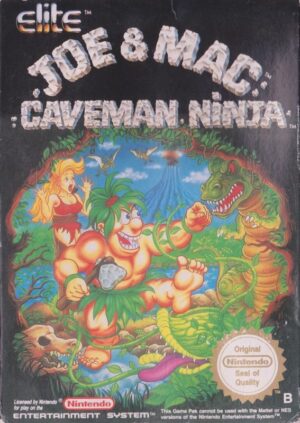Retro Replay Review
Gameplay
Kabuki Klash delivers a straightforward yet deeply engaging fighting system that will appeal to both series veterans and newcomers. Each of the eight playable characters—drawn from the first three Tengai Makyō games—comes with a unique move set of punches, kicks, and special attacks. The familiar four-button layout (light punch, heavy punch, kick, and special) makes it easy to pick up, while advanced techniques like chain combos and aerial juggles reward players who invest time in mastering the inputs.
(HEY YOU!! We hope you enjoy! We try not to run ads. So basically, this is a very expensive hobby running this site. Please consider joining us for updates, forums, and more. Network w/ us to make some cash or friends while retro gaming, and you can win some free retro games for posting. Okay, carry on 👍)
What sets Kabuki Klash apart is its magic gauge system. Special attacks consume a portion of your magical energy, forcing you to balance reckless aggression with resource management. Timing your specials not only turns the tide of a close match but also showcases each character’s signature abilities—whether it’s Ziria’s lightning-fast sword strikes or Orochimaru’s venomous ranged move. The thrill of landing a decisive magic-fueled finisher is undeniable.
Adding to the chaos are random items that drop into the arena: healing potions, damage boosters, and occasionally trap items that can harm both fighters. These pickups keep every round unpredictable, rewarding players who constantly adjust their strategy. Combined with a robust single-player ladder and a two-player versus mode, Kabuki Klash offers enough variety and depth to keep you coming back match after match.
Graphics
Visually, Kabuki Klash is a celebration of 2D sprite art at its finest. The character sprites are large, detailed, and animated smoothly, capturing the expressive flair of each hero’s personality. You’ll notice small touches like Ziria’s flowing hair and Manjimaru’s exaggerated martial-arts poses, which bring the fighters to life in combat.
The backgrounds are richly colored tableaux inspired by medieval Japan—lush cherry blossom gardens, imposing castle courtyards, and stormy mountain passes. Subtle animations, such as drifting petals or flickering torches, add atmosphere without distracting from the action. Although the game occasionally suffers from slight slowdown when too many effects are on screen, it never detracts significantly from the overall aesthetic.
The user interface is clean and unobtrusive: life bars, magic gauges, and round timers remain visible yet minimal, allowing you to focus on the fight. Character portraits that flash during special moves add a dynamic, arcade-like flair. Overall, Kabuki Klash’s graphics honor its RPG roots while delivering the crisp presentation expected of mid-’90s fighting games.
Story
Story in Kabuki Klash is more of a framing device than a sprawling narrative, but it succeeds in setting the stage for a friendly (and sometimes fierce) tournament in the magical land of Jipang. Each character arrives to prove they are the best warrior in the Far East of Eden, offering a satisfying context for every one-on-one battle.
Between fights, brief text cut-ins reveal rivalries and alliances rooted in the lore of Tengai Makyō. While these interstitials are simple—black-background text with character portraits—they add flavor for fans who remember these heroes from their RPG adventures. Newcomers may find the story lean, but each fighter’s unique design and introductory quip still convey personality.
There is no branching narrative or unlockable endings per se, but the tournament ladder mode gives a sense of progression. As you defeat rival characters and face the final boss, you unlock victory screens and short epilogues that celebrate your chosen hero’s triumph. For a fighting game of its era, Kabuki Klash strikes a fair balance between narrative context and pick-up-and-play action.
Overall Experience
Kabuki Klash shines as an import fighting game gem, especially for those craving a distinct Japanese aesthetic and a roster filled with RPG legends. Its intuitive controls, resource-based special moves, and random item drops create a fast-paced and unpredictable battle system that remains enjoyable today. Whether you’re looking to settle the score with a friend or climb the single-player ladder, there’s plenty to keep you engaged.
The game’s audio design complements the visuals nicely, featuring traditional taiko drums, shamisen twangs, and occasional vocal samples that heighten the drama of special attacks. The sound effects are crisp, from the clang of steel on steel to the whoosh of fire-based spells. While the soundtrack may loop, its energetic compositions capture the spirit of ancient Jipang.
In the context of 2D fighters on the market, Kabuki Klash may lack some modern refinements—no online play, limited modes beyond versus and arcade ladder—but it more than compensates with charm and solid mechanics. For fans of Tengai Makyō or anyone seeking a retro fighting experience steeped in Japanese folklore, Kabuki Klash remains a worthwhile addition to your collection.
 Retro Replay Retro Replay gaming reviews, news, emulation, geek stuff and more!
Retro Replay Retro Replay gaming reviews, news, emulation, geek stuff and more!









Reviews
There are no reviews yet.